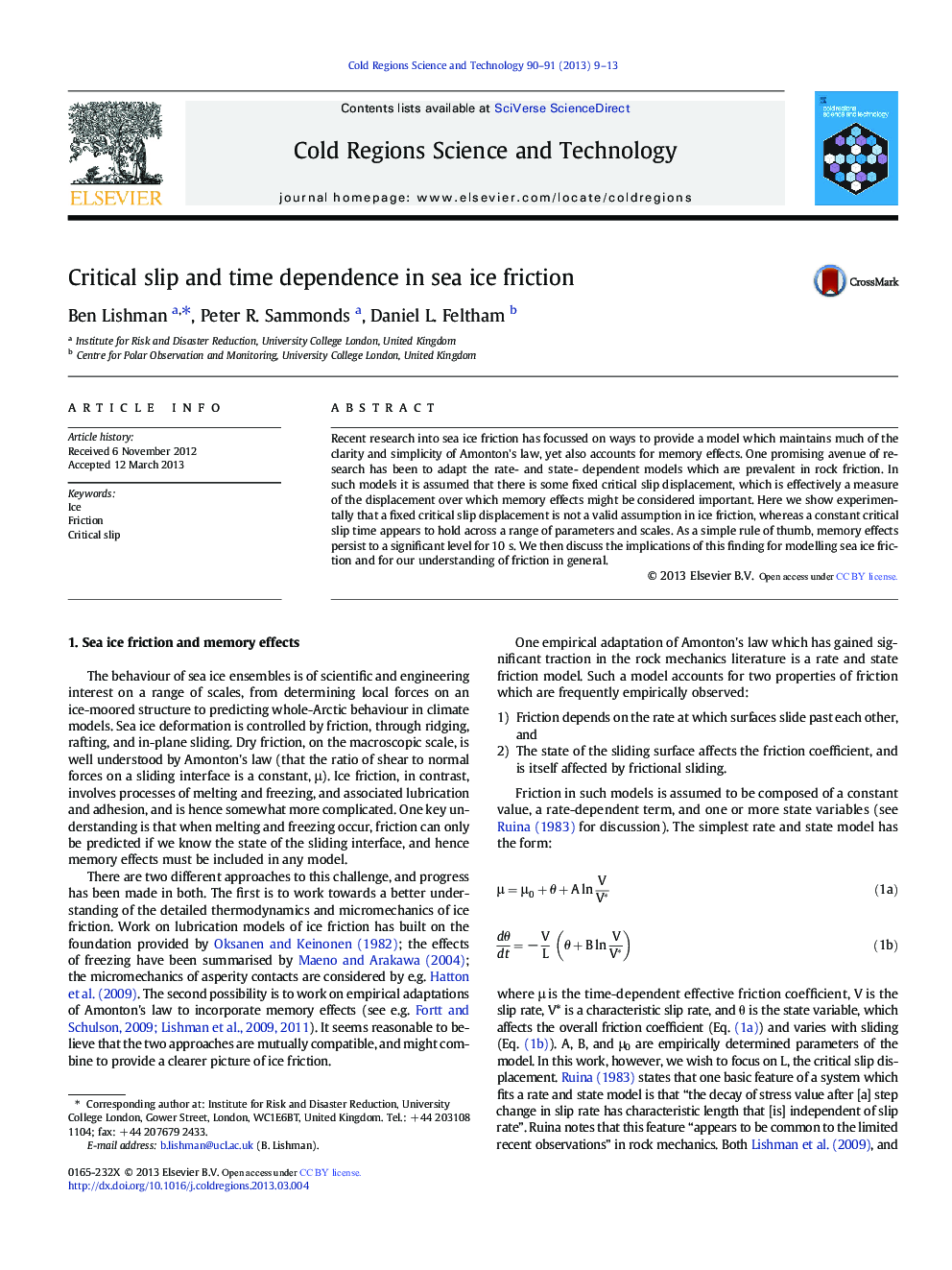| Article ID | Journal | Published Year | Pages | File Type |
|---|---|---|---|---|
| 6427009 | Cold Regions Science and Technology | 2013 | 5 Pages |
â¢Sea ice friction shows memory, which decays over a fixed time.â¢A rate-and-state model can be used to quantify this memory.â¢Model predictions agree well with experimentally measured dynamic friction.
Recent research into sea ice friction has focussed on ways to provide a model which maintains much of the clarity and simplicity of Amonton's law, yet also accounts for memory effects. One promising avenue of research has been to adapt the rate- and state- dependent models which are prevalent in rock friction. In such models it is assumed that there is some fixed critical slip displacement, which is effectively a measure of the displacement over which memory effects might be considered important. Here we show experimentally that a fixed critical slip displacement is not a valid assumption in ice friction, whereas a constant critical slip time appears to hold across a range of parameters and scales. As a simple rule of thumb, memory effects persist to a significant level for 10Â s. We then discuss the implications of this finding for modelling sea ice friction and for our understanding of friction in general.
